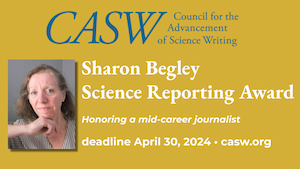England's Queen Victoria, we know, changed the course of European history through her long, eventful reign. But she did so in different ways, including through her significant genetic contributions to European royalty, said John Hawks, an anthropologist at the University of Wisconsin-Madison addressing attendees of the 2009 CASW New Horizons in Science Briefing.
England's Queen Victoria, we know, changed the course of European history through her long, eventful reign. But she did so in different ways, including through her significant genetic contributions to European royalty, said John Hawks, an anthropologist at the University of Wisconsin-Madison addressing attendees of the 2009 CASW New Horizons in Science Briefing.
Queen Victoria carried the gene for hemophilia, a gene that could be traced through her descendants to the son of the Russian Tsar Nicholas II and to other European royals. The monarchy's dependence on the notorious faith healer Rasputin to help their hemophilia-afflicted son helped discredit the tsarist government, contributing ultimately to the fall of the Romanov dynasty.
"Genetics has a direct effect on history," Hawks explained.
But the Wisconsin anthropologist isn't so concerned about the influence of an individual's genetics on history. His research focuses squarely on the broad effects of genetic trends on the evolution of humans.
That the human species continues to evolve is indisputable, said Hawks. The ability to drink milk, the incidence of sickle cell anemia in response to malaria, and shrinking brain size are traits that have all taken place, by anthropological standards, in relatively recent times. Blue eyes, for example, are a relatively recent genetic innovation, arising only about 10,000 years ago through the proliferation of different pigmentation genes.
"Recent evolution is real and it is something that we can see by looking at archaeological samples," Hawks said.
But now, in addition to digging up old skeletons and scouring ancient texts and artifacts, anthropologists are using genetics to shed light on human evolution and the course of history.
Hawks and his team use molecular techniques to study mutations that are selected because they are "advantageous" rather than those that have no apparent impact on evolution. When an advantageous mutation is selected, genes are selected with it, effectively "hitchhiking" on the back of the ancestral mutation. These ancestral genes act as markers for researchers, allowing them to identify selected mutations in the mass of genomic data.
Hawks' group scanned the new 3.9M HapMap genomic dataset for selected mutations.
The HapMap is a database of common genetic variants in humans. It documents not only the details of the variants but how they are distributed among people in a population, and among populations in different parts of the world. Analyzing the frequency and patterns of hitchhiking genes in this dataset, the researchers determined not only how widespread a mutation had become but also when it originated.
The ability to drink milk is a classic example of a recently selected mutation, Hawk noted. Analyzing the dataset, the researchers identified that the mutation for lactase digestion first appeared about 8,000 years ago. Now 80 percent of Eurasian populations are able to digest milk. "That didn't happen by the (lactose tolerant), the milk-drinking people, killing off the other populations," said Hawk. "This happened because populations that had lactase had more kids."
Moreover, Hawks believes that the rate of evolution is speeding up. In 2006, when Hawks and his colleagues analyzed the number of mutations that are currently undergoing selection he was amazed.
"It is like three million years of evolution packed into the last 20,000 years," said Hawks. "That's crazy." The main reason for this astonishing statistic is increasing population size, said Hawks. As populations increase they have many more mutations for natural selection to act on.
But just because Hawks can pinpoint the genetic factors influencing human evolution, he can't always rationalize the reason for an adaptation. When asked why the brain was decreasing in size, for instance, he could only hypothesize. "On a good day I would say that the brain is getting more efficient," said Hawks. "But on a bad day I would say it's idiocracy — we are on our way."
Jane Palmer is a graduate student in the University of California at Santa Cruz Science Writing Program. Previously, she was a computational modeler in the cognitive, biological and environmental sciences and also served a stint at the National Renewable Energy Laboratories where creating visualizations for outreach ignited a passion for communicating science.
.png)

